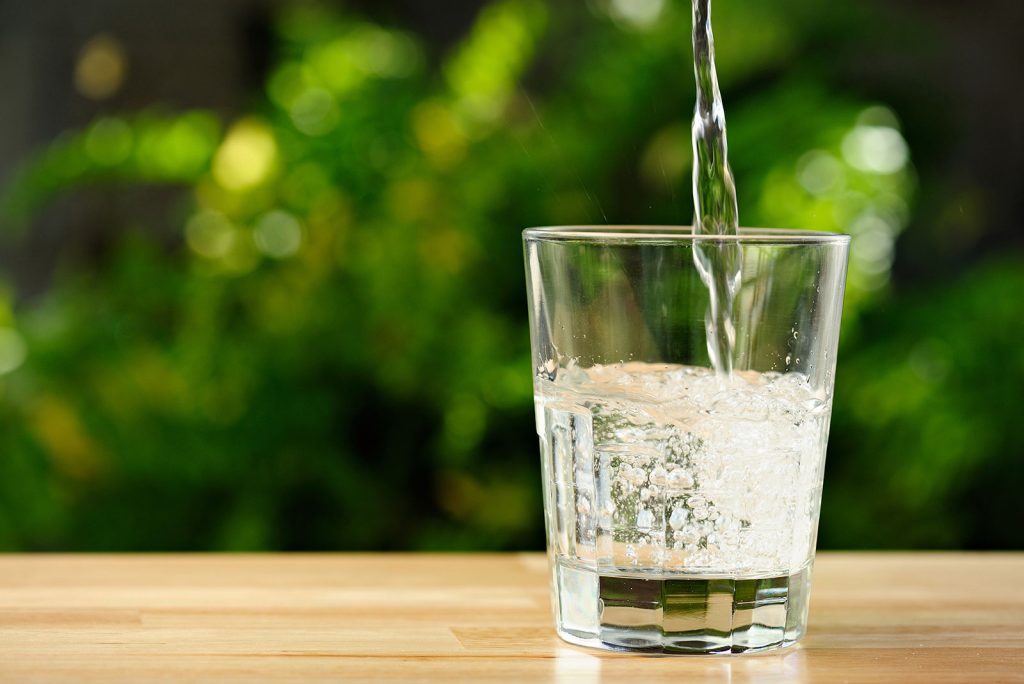
Parental Note: This experiment is geared toward ages 8 and up to be completed independently. The experiment can be completed with children as young as 5 years of age with complete adult support.
Experiment Overview:
Did you know that 70 percent of our planet is covered in surface water such as rivers, lakes, streams, and oceans? Did you know that water vapor and soil moisture also add to the current amount of water on Earth? With these facts, it is easy to see why water is so important to both our planet and humans. Water is also a renewable resource and part of the Earth’s natural environment. Water is considered a renewable resource because it has a naturally occurring cycle; a continuous movement of water called the water cycle. The water cycle occurs when water evaporates from the surface of the earth, rises into the atmosphere, cools/condenses, and then falls back to the Earth as precipitation. This process repeats over and over again with help from the sun’s solar energy.
Knowing that water covers a large portion of our Earth and understanding that water is also a renewable resource are important things to keep in mind when discussing issues like water pollution. Water pollution occurs when harmful substances (chemicals, waste, plastics, heavy metals, farm, and factory runoff) enter the Earth’s water source and contaminate the rivers, streams, lakes, and oceans that cover the planet. With 70 percent of our Earth being covered in water, it is simple to see how this can become a large, global issue. In this experiment, we are going to look at water and the processes needed to filter out contaminants. With each step of this experiment, think about what pollution means on a larger scale. How can your home experiment connect to a worldwide concern when it comes to water pollution?
Experiment Materials:
- 5 glass jars (mason jars work best for this experiment)
- 3 cups of sand
- 3 cups of wooden mulch
- 3 cups of leaves
- 4 coffee filters
- 5 plastic cups
- 1 nail or sharp object
- 1 marker
- 1-gallon jug
- 1 gallon of pond/stream water or a “contaminated” water source (ex: water with potting soil)
- Potential item: 2 cups of potting soil
Experiment Process:
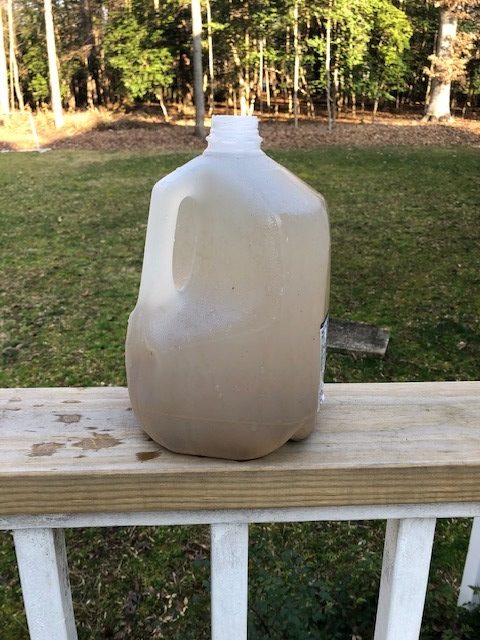
Step 1
First, collect one gallon of dirty water. The water can be from a local pond or stream. If there is no access to dirty water, take a gallon of water and add two cups of potting soil. Stir the water so that the potting soil is mixed evenly and not collecting on the bottom.
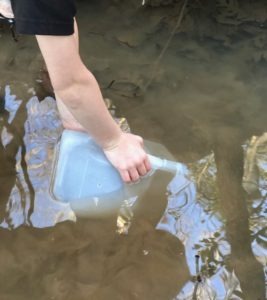
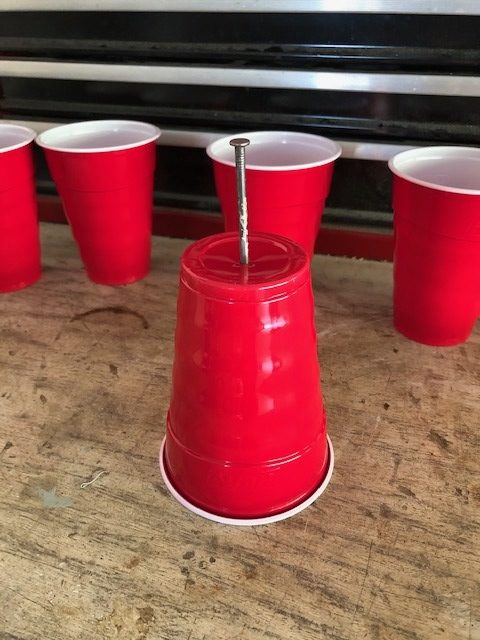
Step 2
With help from an adult, take five plastic cups and poke a hole at the bottom of each with a nail or sharp object.

Step 3
Label each cup as follows:
- Filters
- Leaves
- Sand
- Mulch
- Comb. (Combination)

Step 4
Prepare four of the plastic cups to filter the dirty water. To do this, place one separate material into each cup. (Note: Each cup will only get one material.)
- Cup 1 – fill halfway with sand
- Cup 2 – fill halfway with mulch
- Cup 3- fill halfway with leaves
- Cup 4 – place two coffee filters snuggly at the bottom
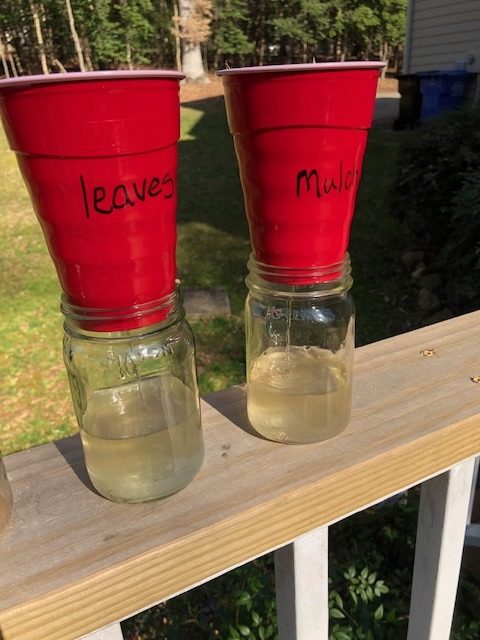
Step 5
Place the four plastic cups on top of the glass jars. Take the dirty water source and pour it into each plastic cup so that the cup fills to the top. Allow the dirty water to filter through each cup into the glass jar below.
Note: Do not discard the water samples located in the clear jar. Keep everything intact.
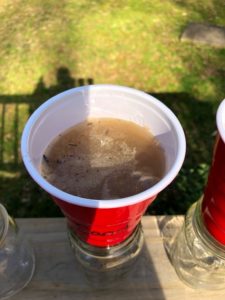

Step 6
Ask the following questions:
- Which material filtered the water the best?
- How do you know that material filtered the water the best?
- Which material was not successful at filtering the water?
- What do you think would happen if we used all four items to filter the water?
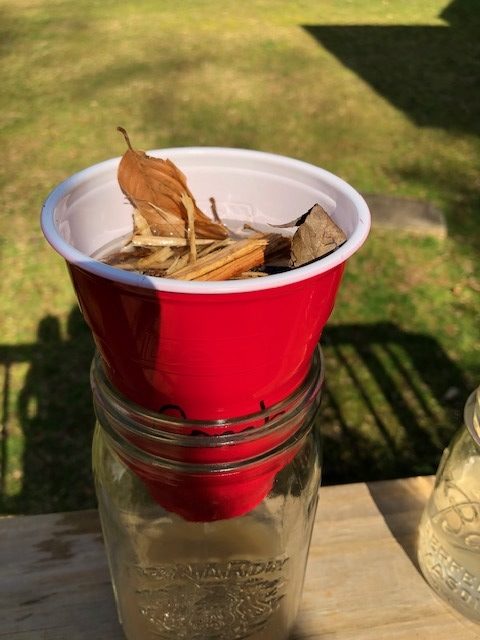
Step 7
The next step will be to answer question four from the list above. To do this, layer the materials used to filter the dirty water in this order:
- On the bottom of the unused plastic cup, place two coffee filters
- Next, a very thin layer of sand
- Place a layer of leaves
- On the top, place a layer of mulch
Put the layered filtration cup on top of the last glass jar and fill with dirty water so that the plastic cup is full to the top. Allow the water to filter into the glass jar.

Step 8
Take all the water samples located in the glass jars and compare them. Answer these questions:
- Which material filtered the water the best?
- What happened when all the filtration items where used?
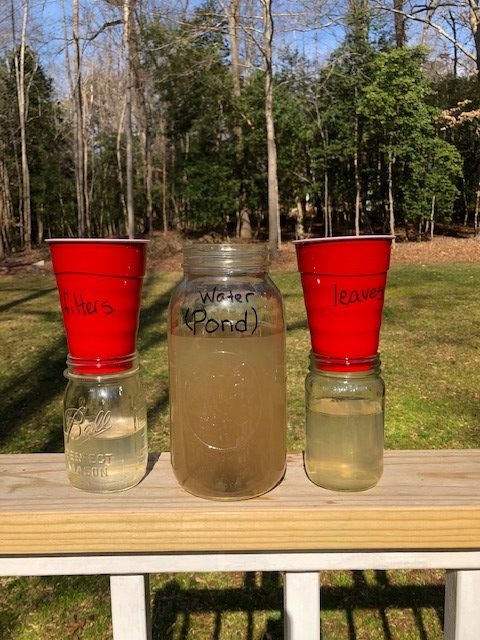
Results from the Experiment - Leaves & Coffee Filters
The two materials that best filtered the dirty water were the leaves and coffee filters. The coffee filters were by far the best filtration system because they were able to catch most of the contaminants.
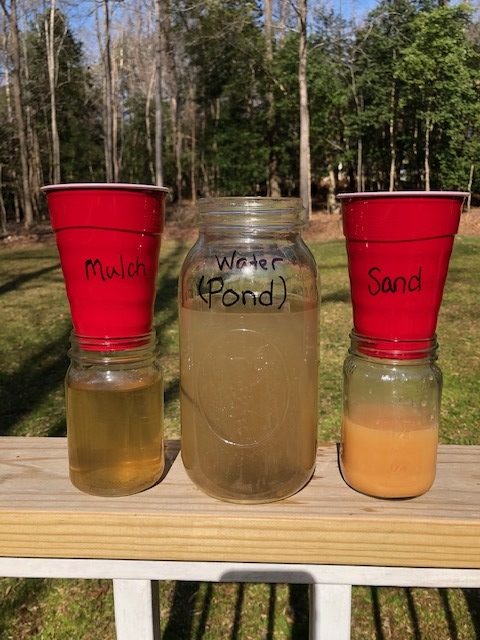
Results from the Experiment - Sand & Mulch
The sand and mulch allowed the most debris to pass into the glass jars. In fact, the sand added contaminants to the water.

Results from the Experiment - Combination
The combination cup filtered out the larger debris but the sand was still able to enter the water supply. Ultimately, the winner for the best filtration system goes to the coffee filters with the leaves coming in at second place!
Conclusions:
Hopefully, this experiment has provided a better understanding of water contaminants and filtration systems but it is important to discuss water pollution on a deeper level. Water pollution can affect groundwater (water occurring deep in the cracks and crevices), the surface water (lakes, rivers, streams), and oceans. Here is a list of the top water pollutants on our planet:
- Agricultural pollutants: fertilizers, pesticides, and animal waste
- Sewage and Wastewater: water from sinks, showers, and toilets
- Oil pollution: gas and oil spills that make their way to water
- Radioactive Substances: mining, power plants, medical and military equipment
After looking at the list, it is easy to see that humans have a negative impact on the quality of water.
Even though water is a renewable resource and will continue to work its way through the water cycle, it is important to understand that we need to keep this cycle clean and functioning properly. Here are some things you can do at home to help reduce water pollution and keep our earth’s water supply clean:
- Make sure not to pour the fat from cooking down the drain, but rather store it in a container to be discarded with the trash
- Do not dispose of household cleaning chemicals down the sink or toilet
- When taking care of the lawn or outside plants, limit the use of pesticides, fertilizers, and herbicides
- Run the dishwasher and washing machine only when there is a full load
- Harvest and recycle rainwater in a collection system
After reading this list, can you think of other ways to keep our water supply clean? Are there other ways you can help our planet and the 70 percent of water that covers the globe? Feel free (with the help of an adult) to further research water pollution and the effect it has on our planet.
Extension:
Variations to experiment:
Parents, feel free to try the following variations to the experiment:
- Vary the materials used to filter the water- cotton, fabric, paper, green leaves, or grass
- Do man-made materials filter the water better than organic materials?
- What would happen if you continued to filter the water multiple times? For example- how clean would the water become if it was passed through the coffee filter 3-4 times?
Extension/Study Questions:
- Why is water considered a renewable resource?
- Why do we need to filter the water supply on Earth?
- What are the different ways to filter contaminated water?
- What are the top water pollutants on our planet?
- What are some ways to reduce water pollutants?









